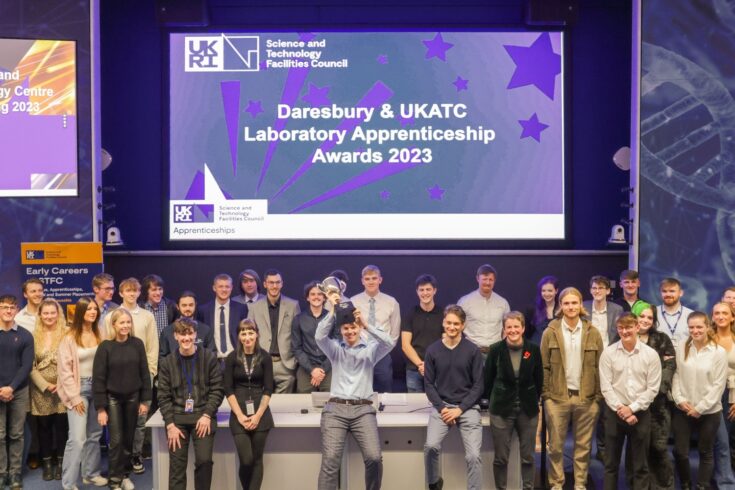The Science and Technology Facilities Council (STFC) recruited its first apprentices in 1992 to fill skills gaps and bring new talent into the organisation. This remains the purpose of the apprenticeship scheme, which provides STFC with a pipeline of science, technology, engineering and maths skills necessary to run its operations. These skills are also vital to the UK workforce.
Since 1992, STFC has trained 405 apprentices. Currently, 189 apprentices are in training across STFC’s sites.
Providing opportunities across the UK
Apprenticeships are offered at:
- Rutherford Appleton Laboratory (RAL) in south Oxfordshire
- Daresbury Laboratory in Cheshire
- Boulby Underground Laboratory in Yorkshire
- UK Astronomy Technology Centre in Edinburgh
The scheme provides training opportunities across the UK.
STFC offers apprenticeships in engineering, scientific computing, project management and administration, to name a few, though the majority work in engineering or computing.
Apprenticeships last two to four years and offer apprentices the opportunity to experience different roles and workplaces.
Chance to support world-leading science
Working at STFC allows apprentices access to a unique combination of expertise, facilities and resources in the workplace, and the chance to support world-leading science and innovation and enable ground-breaking research.
Eilidh Fraser, an Engineering Support Group Apprentice at the UK Astronomy Technology Centre says:
STFC is a great place to work, as the nature of the work is very interesting and exciting.
The diverse projects and national scale allow for many opportunities unique to STFC.
85 to 90% of apprentices continue to work for STFC following their apprenticeship, allowing STFC to benefit from the skills they have developed, and playing an important role in the success of the UK as a science superpower.
Jamie Nutter joined ISIS Neutron and Muon Source as an apprentice in 2008. He has since worked his way up to Electronic Support Section Leader, where he is in charge of the electronics that enable experiments to take place in different environments.
Jamie says:
It’s incredibly satisfying to set up a complex experiment for our world-leading scientists and see how we’ve helped deliver a successful set of results.
Opportunity to launch their careers
Most apprentices begin their apprenticeship straight after leaving school or college.
Working for STFC provides these individuals with the opportunity to launch their careers in an exciting and stimulating environment, where they can play a role in nationally and internationally important scientific projects. Some also take the option to study for further higher qualifications, funded by STFC, following their apprenticeship.

Tara Allinson accepting her award for Apprentice of the Year. Credit: STFC
Tara Allinson, winner of STFC RAL Apprentice of the Year 2023 says:
Becoming an apprentice at STFC is a really good opportunity to be introduced into the workplace, whilst simultaneously gaining an education and also receiving a salary.
I started at ISIS when I was 17 and I can’t tell you how much it’s helped me with my personal confidence.
Top image: Daresbury and UK Astronomy Technology Centre Laboratory Apprenticeship Awards 2023. Credit: STFC

